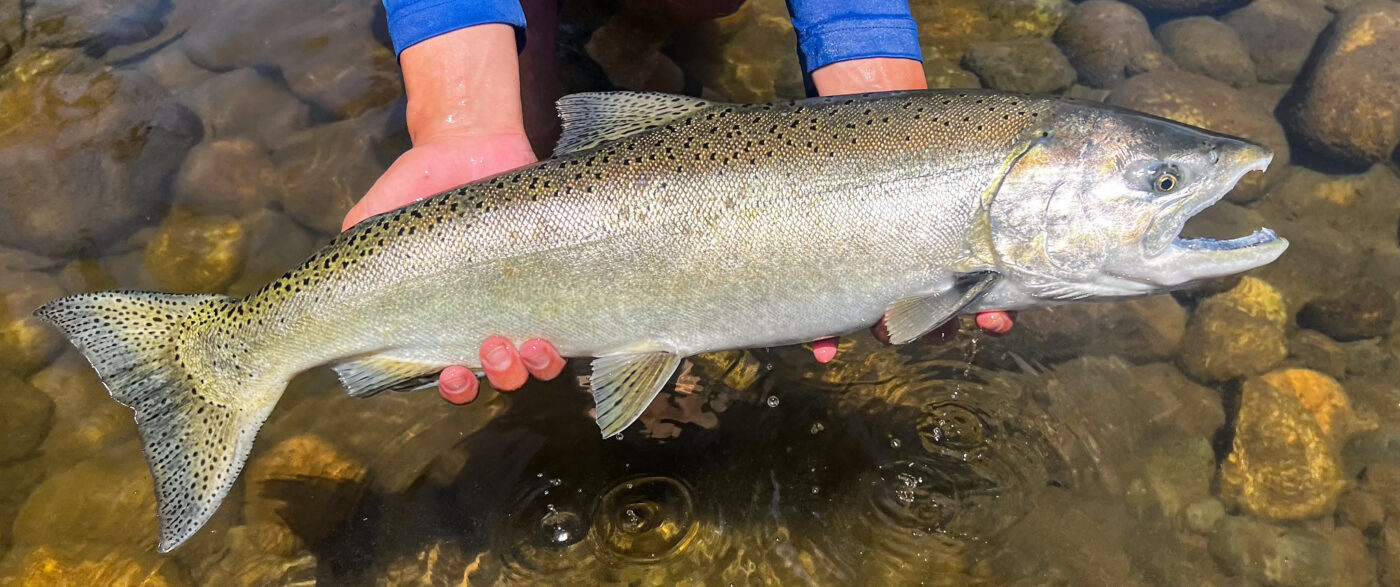Friday May 30, 2025

Common names: Chinook salmon, King salmon
Scientific name: Oncorhynchus tshawytscha
Native range: Western North America
Status: Winter-run Endangered, Spring-run Threatened, Fall-run Threatened in areas
Habitat: Anadromous
Chinook salmon (Onchorhynchus tshawytscha), or king salmon, are native to western North America from Alaska to Santa Barbara. These fish have green-blue backs, silvery sides, and white bellies. As the largest Pacific salmon species, they can grow as large as 58 inches and weigh over 100 pounds. Chinook salmon are anadromous, meaning they are born in freshwater, migrate to the ocean, and return to freshwater to spawn. They spend 2 to 5 years in the ocean before returning to their natal streams. Upon maturation, males change color from silver to red, develop a humpback, and sprout large teeth in hook-shaped jaws. Females dig redds, a gravel nest, with their tails where they deposit 3,000 to 14,000 eggs. Juveniles feed on insects and crustaceans in freshwater, and adults primarily consume other fish in the ocean. Chinook salmon are highly valued as commercial and game fish and in Native American culture. The name “Chinook” comes from the Tribes of Chinookan People of Washington and Oregon, and the species name “tshawytscha” is the common name used by native people in Alaska and Siberia. Some Chinook salmon populations are listed as “endangered” or “threatened”. Distinct populations have evolved into different “races” based on the timing of their migration and spawning.
Fun Fact: Chinook salmon perish after spawning, and nutrients from the ocean that are carried in fish tissues are deposited by their decaying carcasses and have been found in riparian forests.
